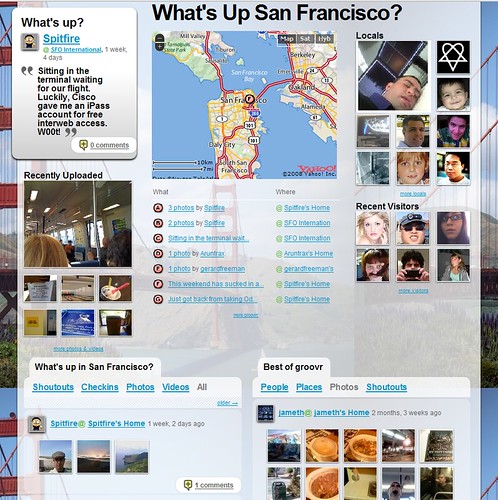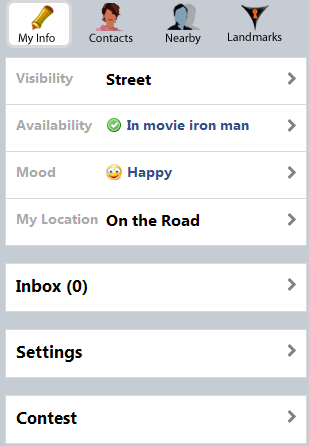Guest Post by: Frédéric Baffou
Procter & Gamble, Coca Cola or Nike are experts in steamroller approach when it comes to a worldwide product launch.
What about a Rock Band?
Metallica, one of the most popular metal band in the world, released one month ago their new album : Death Magnetic.![]() and yes..I am a fan of this band since the beginning.
and yes..I am a fan of this band since the beginning.
After one month of sales, they have reached 1 million copies sold (source: Nielsen SoundScan) with almost half of them done within the first 3 days after the launch. They secured the all-time record for most consecutive #1 debuts in chart history!
I wanted to understand how they have supported the launch of this new album. In the meantime, I looked at the song New Soul (from Yael Naim) which became popular around the planet earlier this year thanks to the commercial for the Apple Macbook Air. This approach based on Word of Mouth (WoM) led the album of this young girl entering the top 10 of the Billboard Hot 100. Only 18 songs have done so since 2000.
At the end of the day, some marketing Tips can be identified based on these experiences.
A very good execution of a 360° Marketing strategy
One of the principle of being Customer Centric is to approach with consistency the consumer from many different angles. Metallica is definitely a master (of puppets) on this battle ground.
They have used the full scope of marketing tools before, during and after the release of their new CD. The support stems from pre-launch website to CRM through community based tools.
What did Metallica control?
The different building blocks are organized with consistency and interacting across each other which contributed to expand the snow ball effect.
You can click on each of the image to get the details of various examples.
Branding mmm Pre-Launch Website Main Website



Video games mmm Goodies m Music mm
mm  mm
mm![]()
Interviews mmmmmmm mTV Shows mmmmm Concerts![]()


What did Metallica NOT control?
Quality of sound
In the meantime, they have been exposed to a polemic about the sound quality of their new album. Many fans claimed that the sound was too loud which created a major buzz. Even, The Wall Street Journal published a detailed article on the subject 2 weeks after the official release of the album. It led Lars Ulrich (drummer) to make a public statement few days later. However, the Buzz is still on air! A petition which has collected more than 15 000 signatures is growing everyday.
Length of songs
The band had contributed to the end of the free Peer To Peer (P2P) platform, Napster. However, some original new songs were circulating on the web but had been remastered by a fan to be shorter than original tracks (7′ in average).
The Swedish newspaper Sydsvenskan commented positively this initiative. Universal Music issued a press release and cancelled the interview planned with the journalist. This local event was largely commented internationally on the web beyond the fans’ community.
What is the result?
Metallica achieved a record sales supported by a major investment. The main challenge is now to maintain such level of performance while keeping a genuine interactivity with fans.
Yael Naim has reached a worldwide awareness thanks to her talent (and David Donatien), an album done in their apartment and a 30 secs advertisement…Not bad in terms on ROI.
She was opportunistic, flexible and build momentum when Apple’s commercial pushed her over the Tipping Point. WoM was the main vehicle benefiting from a very good fit between Apple’s brand image and the music.
Metallica and Yael Naim have aligned their resources with their goals. However, they have in common one fundamental which is the quality of their “product” as both people and critics have appreciated a lot their music.

10 Tips to practice efficiently 360° Marketing
1- Define first a clear set of goals and the related strategy
2- Understand well your audiences/consumers and the way they use & interact with your brand(s)/products (incl. opinion leaders)
3- Identify clearly the different marketing channels (and their mix) that consumers are using (and not using) to get informed, to communicate, to entertain, to try and to purchase
4- Define the most appropriate channel(s) related to the status of your consumers (e.g. acquisition vs loyalty) and allocate a precise role to each of them
5- Keep always the ears, the eyes opened to what is going on the maket
6- Deliver a message if it brings value to your clients or audiences
7- Be consistent within and across all channels (one size doesn’t fit all) and produce regularly new content
8- Seek feedback and involvement from consumers and integrate it in the next steps
9- Measure, benchmark and allocate resources accordingly, i.e Quality over Quantity
10- Keep in mind that the best advocate about your products is NOT the brand but the consumer

 Earlier today we covered
Earlier today we covered  Editor's note: Looking back over 2008, there were some posts on ReadWriteWeb that did not get the attention we felt they deserved - whether because of timing, competing news stories, etc. So in this end-of-year series, called Redux, we're resurrecting some of those hidden gems. This is one of them, we hope you enjoy (re)reading it!
Editor's note: Looking back over 2008, there were some posts on ReadWriteWeb that did not get the attention we felt they deserved - whether because of timing, competing news stories, etc. So in this end-of-year series, called Redux, we're resurrecting some of those hidden gems. This is one of them, we hope you enjoy (re)reading it! Recommendations company
Recommendations company  The
The 
 We recently profiled
We recently profiled  Taking a different approach from Brightkite,
Taking a different approach from Brightkite, 

 Developed by
Developed by 